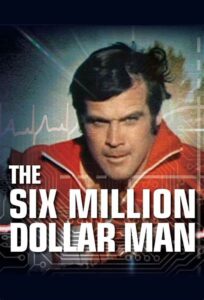
So how are we all getting along these days on Planet Earth? This week I would like for you to view the classic video created by our very own K-State professor, Michael Wesch, The Machine is Us/ing Us. Published in 2007, this video now has over 12 million views. Of course the digital interfaces shown and some of the technology discussed seems out of date, but the key principle is still relevant; digital texts are different than printed texts in large part thanks to the hyperlinks and multimedia.
Digital texts have become the new “normal” way of communicating for most people. We are nearly a quarter of a century into the 21st century yet our educational institutions are still firmly planted in the old ways Sure we use computers, but mostly to do the sort of work that would be completely familiar to our parents and grandparents. We still write a “paper” or read an article from a periodical or journal. College students did these things before computers. I can remember in the 8th grade, I made a slideshow presentation about our community using a shoebox and a roll of paper on which I drew pictures while I played a prerecorded soundtrack that I recorded with a tape recorder. I basically made a PowerPoint presentation using the tools I had available to me.
The things we are doing now have sped up, but are mostly the same. |
Think about this: how have we as readers and consumers of digital new media texts been affected? What about the content creators and storytellers? How have our lives been changed (have they changed?) now that we can just as easily create and share information as we can find and consume it?
- I would also like for you to view this video of Kurt Vonnegut and start thinking about the Shapes of Stories.
- After viewing the Vonnegut video, choose a favorite story that you are familiar with. Ideally, try to think of one that fits with our theme of survival. Vonnegut’s example of Cinderella fits the survival theme, but don’t use his, find your own example. It could be a classic tale that everyone knows or it could simply be a book you have read or a film/movie/show you have seen at some point. Apply the “shapes of stories” described by Vonnegut to your new story. What shape would it be? What techniques are used in the story to gain and hold your attention? Is it a traditional text-based story or is it in another format? Every media format has its own language. It is our job as students of digital literacy to consider what those languages consist of and begin exploring some of those techniques that might be of use to us in the future. Start thinking about storytelling and story structure and how they work in the digital realm. Write up your thoughts in a blog post and title it with something like “Story Analysis”. Share an excerpt of what you wrote with the rest of the class in your Island Space on Miro.com.
- If you have not already done so, introduce yourself on Teams to the other classmates and find out something new about 2-3 others. What are your common interests? Learning and/or career goals? What do you like the best about online learning? What do you like the least? Use the #General Teams channel for this type of conversation.
- Brainstorming – Think about stories, books, films, music and any other forms of media that relate to our theme of “The 20th Century.” Post your ideas in the Week 3 – Brainstorming thread. Draw from these ideas to complete this week’s assignments from the DS106 Assignment Bank.
- Summarize a Movie with Animated Gifs
- Create a 30-45 second radio commercial for a product from the 80’s. Add in some background music and/or sound effects to make it sound like a real radio commercial.
- Summarize the week. Create a summary post of all activities for the week and post it to the Week 3 assignment on Canvas. Please submit your summary by next Monday evening at 11:59 pm. The weekly summary needs to be a recap of the week’s work that you completed. Use the weekly summary to refer back (link) to each of the other posts you have written and any assignments you have worked on during the week. It should include descriptions of all of the assignments and activities that you have completed.
You don’t need to rewrite what you’ve written elsewhere, but do summarize those other posts and provide a hyperlink back to them as well. There is a link button in the editor to easily make hyperlinks.
- Still Confused? Please contact Professor Genereux right away. Teams messaging is preferred. E-mail (billgx@ksu.edu) is also acceptable.